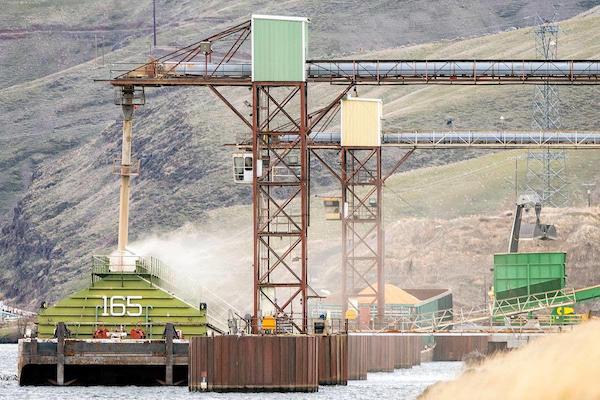forum
library
tutorial
contact

New Study Warns of the Dangers
Associated with Removal of Snake River Dams
by Staff
Big Country News, January 7, 2020
|
the film forum library tutorial contact |

|
New Study Warns of the Dangers
by Staff
|
Dam breaching could put over 1,100 farms at risk of bankruptcy.
Rail and grain elevator networks would need over $1.6 billion in capital investment
 PORTLAND, OR - The removal of four lower Snake River dams would cost the U.S. over $2.3 billion over the next 30 years, lead to significant additional carbon emissions that contribute to climate change, and jeopardize health, safety and livelihoods in already economically fragile local and regional economies, according to an independent evaluation commissioned by the Pacific Northwest Waterways Association.
PORTLAND, OR - The removal of four lower Snake River dams would cost the U.S. over $2.3 billion over the next 30 years, lead to significant additional carbon emissions that contribute to climate change, and jeopardize health, safety and livelihoods in already economically fragile local and regional economies, according to an independent evaluation commissioned by the Pacific Northwest Waterways Association.
The study was performed by financial and economic consultants FCS Group to assess several impacts that would result if barging on the Snake River is lost. Significant additional effects due to the loss of hydropower, irrigation and other authorized uses would also occur, but are not captured in this targeted report.
The study says breaching the Snake River dams would cause diesel fuel consumption to increase by nearly 5 million gallons per year as barges are replaced by less efficient truck-to-rail shipments. At least 201 additional unit trains and 23.8 million miles in additional trucking activity would be required annually, resulting in increases in CO2 and other harmful emissions by over 1.2 million tons per year.
Transportation and storage expense will likely increase 50% to 100% for grain suppliers and shippers, according to the study. At the current reported "break even" cost per bushel of $5.00, the transportation/storage cost is now approximately $0.40 per bushel of wheat. These costs could increase by up to $0.80 per bushel with barging removed as a transportation option.
Additional findings include that dam breaching could put over 1,100 farms at risk of bankruptcy, rail and grain elevator networks would need over $1.6 billion in capital investment, and essential health, sanitation and safety would be jeopardized, along with other public services.
"Dam breaching extremists talk about how easy and inexpensive it would be to compensate Washington, Oregon and Idaho businesses and residents if the lower Snake River dams were removed," said PNWA Executive Director Kristin Meira. "We commissioned this study to show federal and state decision makers the real economic and environmental impacts on real people and communities that would result."
The complete study is available on the PNWA website at www.pnwa.net/energy-salmon/.
learn more on topics covered in the film
see the video
read the script
learn the songs
discussion forum
